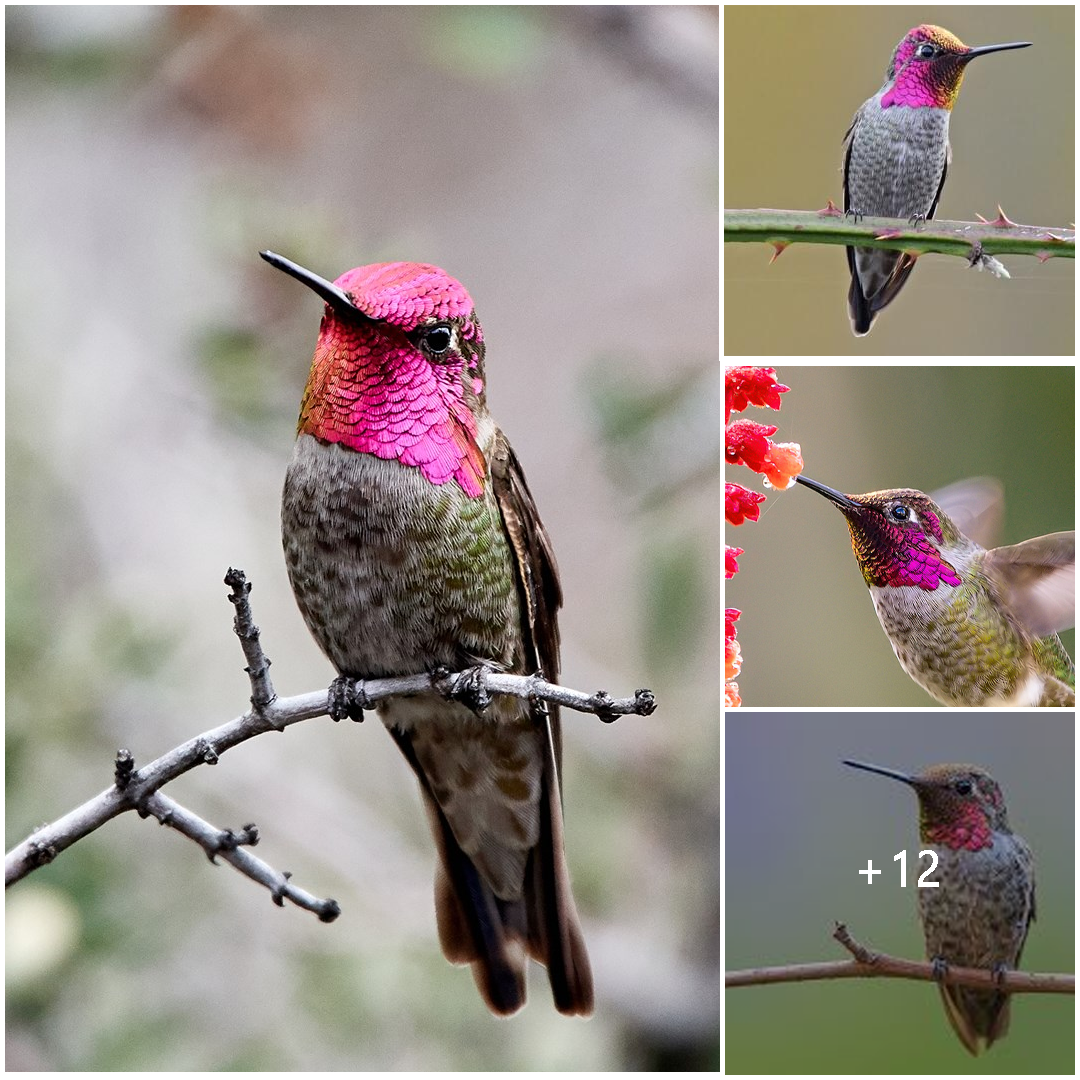
Anna’s Hummingbird: The Jewel of the Pacific Coast
With its iridescent plumage, agile flight, and vibrant personality, the Anna’s Hummingbird (Calypte anna) stands as a true gem of the Pacific Coast. This enchanting avian species, named after Anna Masséna, Duchess of Rivoli, captivates birdwatchers and nature enthusiasts with its dazzling displays and remarkable adaptations. Join us as we delve into the world of the Anna’s Hummingbird, exploring its distinctive characteristics, ecological significance, and fascinating behavior.
Distinctive Characteristics: The Anna’s Hummingbird is renowned for its striking appearance, featuring iridescent emerald-green plumage on its back and head, with a contrasting rosy-pink throat and crown. The male’s vibrant throat patch, known as a gorget, dazzles in the sunlight, flashing bright shades of pink and magenta during courtship displays. In contrast, the female sports more muted colors, with a green back and grayish-white underparts.
Agile Flight and Acrobatics: Equipped with rapid wingbeats and exceptional maneuverability, Anna’s Hummingbirds are masterful aerial acrobats. Their ability to hover, fly backwards, and dart from flower to flower with pinpoint precision enables them to access nectar from a wide range of floral sources. These agile flyers are also known for their distinctive courtship displays, which involve high-speed dives and swoops to impress potential mates and establish territory.
Ecological Significance: As important pollinators, Anna’s Hummingbirds play a vital role in maintaining the health and diversity of coastal ecosystems. Their long, slender bills and specialized tongues are perfectly adapted for sipping nectar from flowers, inadvertently transferring pollen from one bloom to another as they feed. In doing so, they facilitate the fertilization of flowering plants and contribute to the production of fruits, seeds, and other essential resources for wildlife.
Behavior and Adaptations: Anna’s Hummingbirds are highly adaptable birds, capable of thriving in a variety of habitats, including coastal scrublands, gardens, parks, and urban areas. Despite their diminutive size, these feisty birds are known for their territorial behavior, fiercely defending feeding and nesting sites from intruders, including other hummingbirds and larger birds. During the breeding season, males perform elaborate courtship displays to attract mates, showcasing their agility and prowess in mid-air.

Conservation Challenges: While Anna’s Hummingbirds are currently listed as a species of Least Concern by the International Union for Conservation of Nature (IUCN), they face a range of threats in their natural habitat. Habitat loss, pesticide use, climate change, and competition for resources from invasive species are among the primary conservation challenges facing these charismatic birds. Efforts to protect and restore coastal habitats, provide supplemental food sources, and reduce human impacts are essential for ensuring the long-term survival of Anna’s Hummingbirds and other wildlife species.
Conclusion: Anna’s Hummingbird, with its dazzling plumage, agile flight, and vital ecological role, is a true emblem of the Pacific Coast’s natural beauty and biodiversity. As stewards of our coastal ecosystems, it is our responsibility to protect and preserve the habitats upon which these enchanting birds depend. By appreciating and safeguarding the habitats of Anna’s Hummingbirds, we can ensure that future generations continue to be enchanted by the beauty and wonder of these remarkable avian jewels.





